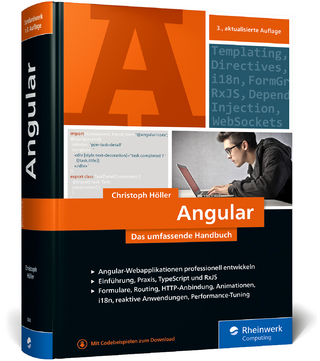
Beginning Power Apps
Apress (Verlag)
978-1-4842-6682-3 (ISBN)
In this new edition, business applications expert Tim Leung offers step-by-step guidance on how you can improve all areas of your business. He shows how you can replace manual or paper processes with modern apps that run on phone or tablet devices. For administrative and back-office operations, he covers how to build apps with workflow and dashboard capabilities. To facilitate collaboration with customers and clients, you’ll learn how to build secure web portals with data entry capabilities, including how to customize those portals with code.
This hands-on new edition has 10 new chapters—including coverage on model-driven and portal apps, artificial intelligence, building components using the Power Apps Component Framework, using PowerShell for administration, and more—complete with context, explanatory screenshots, and non-technical terminology.
What You Will Learn
Create offline capable mobile apps and responsive web apps
Carry out logic, data access, and data entry through formulas
Embellish apps with charting, file handling, photo, barcode, and location features
Set up Common Data Service, SharePoint, and SQL data sources
Use AI to predict outcomes, recognize images, and analyze sentiment
Integrate apps with external web services and automate tasks with Power Automate
Build reusable code and canvas components, make customizations with JavaScript
Transfer apps and data, and secure, administer, and monitor Power Apps environments
Who This Book Is For
Beginners and non-developers, and assumes no prior knowledge of Power Apps
Tim Leung is a software developer with more than 10 years of experience in designing and building large-scale commercial applications. He is a recognized expert in the field of rapid application development and his previous publication with Apress, Visual Studio LightSwitch, covers this topic in depth. Tim is a Microsoft certified developer, a chartered member of the British Computer Society, and holds a degree in information technology.
Part I: Power App Fundamentals.- Chapter 1: Introducing Power Apps.- Chapter 2: Subscribing to Power Apps.- Chapter 3: Creating Your First App.- Chapter 4: Sharing Apps.- Chapter 5: Using Formulas.- Part II: Working with Data.- Chapter 6: Setting Up SharePoint, SQL, and More.- Chapter 7: Working with Tables and Rows.- Chapter 8: Searching and Retrieving Data.- Part III: Developing Canvas Apps.- Chapter 9: Canvas App Design.- Chapter 10: Using Simple Controls.- Chapter 11: Using Table/Record Data Controls.- Part IV: Developing Model Driven and Portal Apps.- Chapter 12: Building a Dataverse Database.- Chapter 13: Developing Model-Driven Apps.- Chapter 14: Building Portal Apps.- Chapter 15: Retrieving Data from Portal Apps.- Part V: Enhancing Apps.- Chapter 16: Working with Images and Media.- Chapter 17: Storing and Retrieving Files.- Chapter 18: Integrating Maps and Location Services.- Chapter 19: Charting Data.- Chapter 20: Adding Artificial Intelligence to Apps.- Part VI: Reusability.- Chapter 21: Building Reusable Canvas Components.- Chapter 22: Building Reusable Code Components.- Part VII: Offline and Integration.- Chapter 23: Working Offline.- Chapter 24: Creating Custom Data Connectors.- Part VIII: Administration.- Chapter 25: Using Power Automate.- Chapter 26: Transferring Apps and Data.- Chapter 27: Administering Security.- Appendix A - Sample App Data Structure.
| Erscheinungsdatum | 19.03.2021 |
|---|---|
| Zusatzinfo | 688 Illustrations, black and white; XXXV, 943 p. 688 illus. |
| Verlagsort | Berkley |
| Sprache | englisch |
| Maße | 178 x 254 mm |
| Themenwelt | Informatik ► Software Entwicklung ► Mobile- / App-Entwicklung |
| Schlagworte | Android • Cloud • Codeless coding • Excel • Ios • Microsoft • mobile applications • mobile computing • Office • Power Apps • PowerApps • Power Platform • Tim Leung |
| ISBN-10 | 1-4842-6682-X / 148426682X |
| ISBN-13 | 978-1-4842-6682-3 / 9781484266823 |
| Zustand | Neuware |
| Haben Sie eine Frage zum Produkt? |
aus dem Bereich


